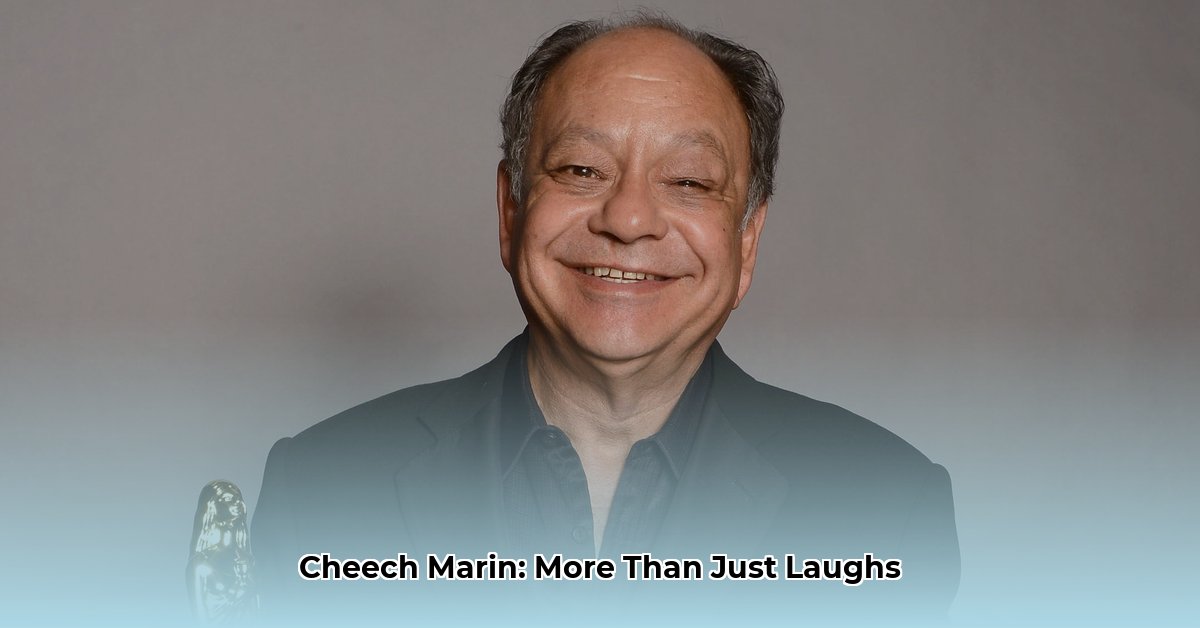Richard “Cheech” Marin’s journey, from the hazy laughter of Cheech & Chong to becoming a respected advocate for Chicano art, is a fascinating evolution. It’s a story that twists and turns, surprising us at every corner, much like a Cheech & Chong movie itself, but with a depth that goes far beyond the jokes.
Lowriders and Laughs: Cheech’s Early Days
His early life in Los Angeles, where he was born in 1946, provides a glimpse into the roots of his comedic genius. The nickname “Cheech,” a playful take on chicharron, almost feels like a premonition of his future. Music, particularly Chicano rock, played a significant role, likely honing his sense of timing and rhythm—skills essential to his later comedic performances.
Cheech & Chong: Counter-Culture Kings
The 1970s, a time of social and cultural upheaval, saw the rise of Cheech & Chong. Their humor, a blend of stoner wit, social satire, and often-improvised observational comedy, resonated with a generation questioning authority. Their Chicano and Chinese-Canadian heritage added depth, making their comedy universally relatable. Up in Smoke (1978) became a cult classic, cementing their place in comedic history. Their albums, like Big Bambu (1972) and Los Cochinos (1973), further solidified their counter-culture status. The duo’s story, including their breakups and reunions, is explored further in the 2025 documentary Cheech & Chong’s Last Movie Documentary.
Beyond the Smoke: A Solo Career Blossoms
Could Cheech Marin transcend the “stoner” image? He answered with a resounding yes. His solo career showcased surprising versatility. Born in East L.A. (1987) tackled social issues with humor, while Nash Bridges (1996-2001) explored law enforcement. Collaborations with Robert Rodriguez, like Desperado (1995) and From Dusk Till Dawn (1996), further cemented his acting credentials. This period suggests a deliberate effort to diversify and establish himself as a serious actor.
Finding His Voice: Animation and Beyond
Cheech’s distinctive voice opened doors to animation. From Banzai in The Lion King (1994) to Ramone in Cars (2006), his voice work demonstrates remarkable range. This broadened his appeal, exposing him to a new generation. He also contributed to TV shows and video games.
Notable Voice Acting Roles:
| Film/Series | Character | Year |
|---|---|---|
| Oliver & Company | Tito | 1988 |
| The Lion King | Banzai | 1994 |
| FernGully | Stump | 1992 |
| The Lion King II | Banzai | 1998 |
| Cars | Ramone | 2006 |
| Cars 2 | Ramone | 2011 |
| Cars 3 | Ramone | 2017 |
| The Lion Guard | Banzai | 2016-2019 |
| Coco | Corrections Officer | 2017 |
The Art of Cheech: Cultural Champion
Perhaps the most surprising chapter is Cheech’s passion for Chicano art. He didn’t just collect; he became a champion, curating exhibitions and establishing “The Cheech Marin Center for Chicano Art & Culture” in Riverside, California. This suggests a deep connection to his heritage and a desire to promote Chicano artists.
A Multifaceted Legacy
Cheech Marin’s legacy is a blend of laughter, art, and Chicano pride. He challenged perceptions, elevated art, and made us laugh along the way. His journey reminds us that even within unexpected paths, profound discoveries and transformations await. What’s next for this multi-talented individual? Ongoing research into his current projects and social media offers clues, but one thing is certain: the story of Cheech Marin continues to unfold.










